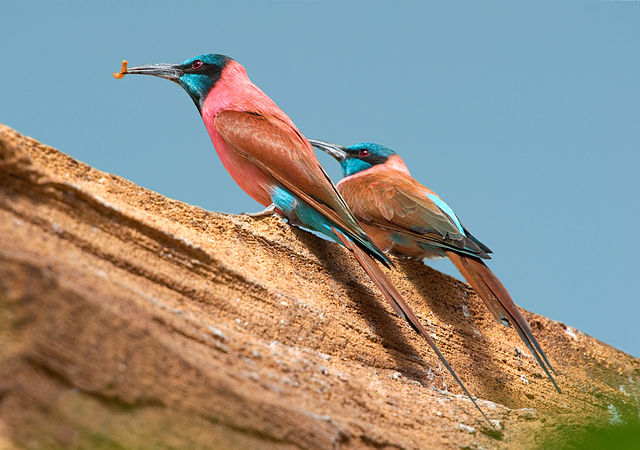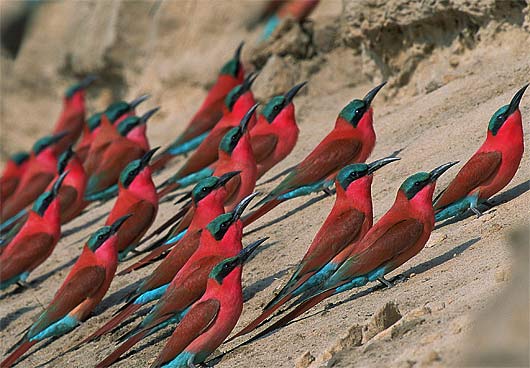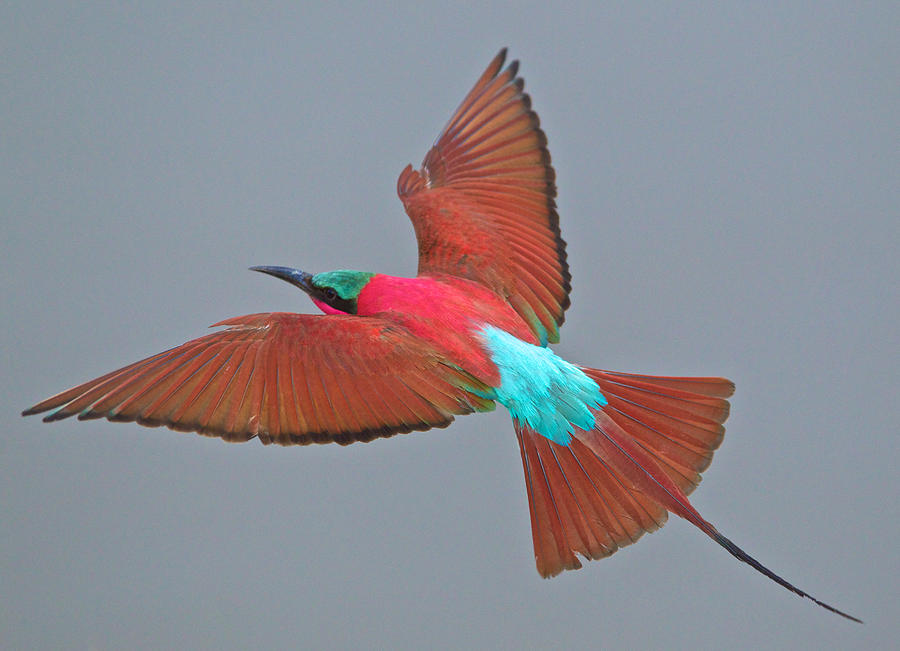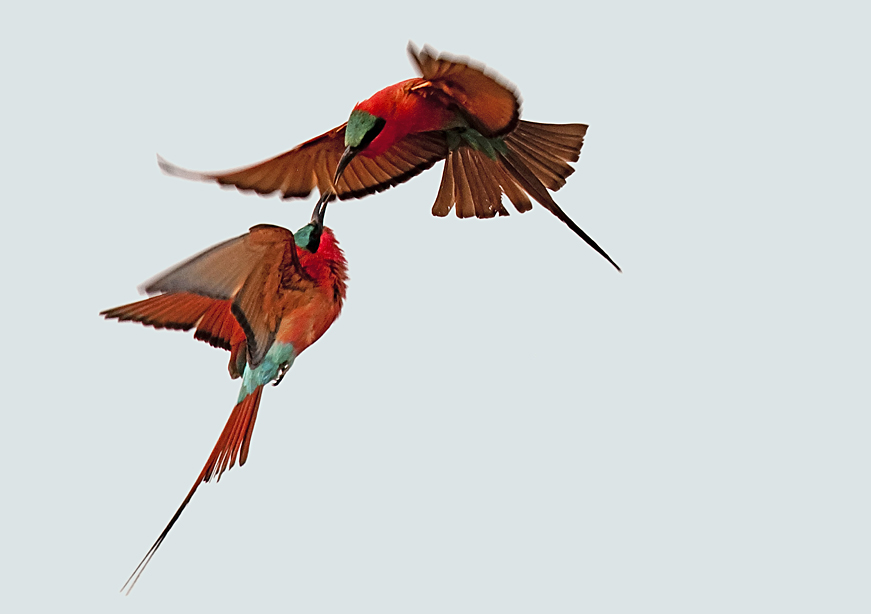Introduction: Nature has a way of surprising us with its stunning creations, and the Carmine Bee-eater is a prime example of this. This exquisite bird, with its dazzling plumage and captivating colors, is a true marvel of the avian world. In this article, we invite you to embark on a journey to discover the splendor of the Carmine Bee-eater, a species that enchants birdwatchers and nature lovers alike with its remarkable beauty.
1. A Fiery Red Vision: The Carmine Bee-eater (Merops nubicoides) is renowned for its striking plumage. Its name is derived from the deep carmine red color that graces its throat, face, and underparts. This vibrant hue is a testament to the bird’s breathtaking beauty.

2. A Splash of Turquoise: Complementing its fiery red tones, the Carmine Bee-eater sports a splash of turquoise on its wings and back. These iridescent feathers shimmer in the sunlight, creating a stunning contrast with the bird’s red plumage.

3. Migratory Marvels: Carmine Bee-eaters are migratory birds, and their annual journey is nothing short of awe-inspiring. They travel from their breeding grounds in sub-Saharan Africa to various parts of the continent, following the rainy season in search of their favorite food source – bees and other flying insects.

4. Remarkable Nesting Sites: One of the most remarkable aspects of these birds is their choice of nesting sites. They often nest in colonies, burrowing holes into the sides of riverbanks. These nesting colonies can sometimes consist of hundreds of pairs, creating a vibrant and bustling avian community.

5. Impressive Feeding Rituals: Carmine Bee-eaters are skilled hunters. They are known for their acrobatic flights as they pursue flying insects in mid-air. Once they catch their prey, they return to a favored perch, where they deftly remove the stingers from their catch before enjoying their meal.

6. A Harmonious Display: During the breeding season, Carmine Bee-eaters engage in synchronized displays of courtship. These displays involve intricate aerial acrobatics and are a testament to the bird’s dedication to finding a mate.

7. Conservation Concerns: While these birds are undeniably stunning, they face several conservation challenges, primarily due to habitat loss and disturbance at their nesting sites. Conservation efforts are crucial to preserving their populations and ensuring future generations can marvel at their beauty.

8. A Symbol of Nature’s Artistry: In many ways, the Carmine Bee-eater serves as a symbol of nature’s artistry and the incredible diversity of life on our planet. Its radiant colors and remarkable behaviors remind us of the importance of preserving the natural world for generations to come.

Encountering the splendor of the Carmine Bee-eater is a privilege for birdwatchers and nature enthusiasts. Its fiery red plumage, turquoise accents, and captivating behaviors make it a true gem of the avian kingdom. As we celebrate the beauty of these birds, let us also recommit ourselves to the conservation of their habitats, ensuring that future generations can continue to admire the dazzling colors and remarkable nature of the Carmine Bee-eater in the wild.

